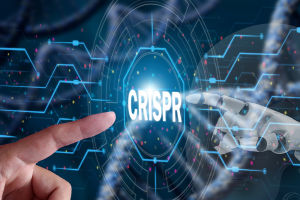Have you ever wondered what goes on inside a nuclear reactor? It sounds like a complex and mysterious world, but understanding how nuclear reactors work is crucial in today's energy landscape.
We rely on nuclear energy for a significant portion of our electricity, and learning about it not only sparks curiosity but also deepens our understanding of one of the most powerful and controversial energy sources in the world.
In this article, we will take you on a journey inside a nuclear reactor, explaining how it works, the components involved, and how safety is ensured during the process. By the end of it, you'll see just how intricate and sophisticated nuclear energy generation is.
What Is a Nuclear Reactor?
At its core, a nuclear reactor is a device that facilitates a controlled nuclear chain reaction. It uses nuclear fission—the process of splitting heavy atomic nuclei like uranium or plutonium to release a huge amount of energy. This energy is then converted into heat, which turns water into steam. The steam spins turbines, which generate electricity.
It sounds simple in theory, but in practice, the process involves a highly controlled and carefully monitored environment. Nuclear reactors are the heart of nuclear power plants and are designed to generate a steady and reliable flow of energy. They are also used in other areas, such as medical isotope production and research.
Key Components Inside a Nuclear Reactor
Now that we know what a nuclear reactor is, let's explore its components. A reactor's design can vary, but most share several key components that make the nuclear fission process possible.
1. Fuel Rods: These are long, cylindrical tubes filled with enriched uranium or sometimes plutonium. The uranium atoms inside the fuel rods are split during the fission process, releasing energy. This is the heart of the reaction. The more fuel rods you have, the more energy can be produced.
2. Control Rods: These rods are made from materials like boron or cadmium and are inserted into the reactor to control the nuclear reaction. They absorb excess neutrons, slowing down or halting the chain reaction if necessary. By adjusting the position of these rods, operators can control the rate of fission and maintain a safe, steady energy output.
3. Moderator: The moderator is usually made of graphite or water and serves to slow down the neutrons produced during the fission process. Slower neutrons are more likely to cause additional fissions, maintaining the chain reaction. Without the moderator, the process wouldn't be as efficient.
4. Coolant: A fluid, typically water, circulates around the reactor core to absorb the heat produced by the fission reaction. The heated coolant then moves to a heat exchanger, where it is used to convert water into steam for turbine generation. The coolant is crucial for preventing the reactor from overheating.
5. Containment Vessel: The reactor core, along with all the fuel rods and coolant, is housed inside a thick, steel-reinforced concrete vessel. This is the containment structure, which is designed to prevent the escape of radioactive materials and protect the environment from any potential accidents.
6. Turbine and Generator: After the coolant has been heated into steam, the steam is directed to a turbine. As the steam spins the turbine blades, mechanical energy is converted into electrical energy, which is then sent to the power grid.
How Do Nuclear Reactors Work?
Now that we know the components, let's break down the process of how a nuclear reactor works.
The fuel rods are where the nuclear fission occurs. When a neutron hits the nucleus of a uranium atom, it splits, releasing energy in the form of heat and additional neutrons. These new neutrons continue to split more uranium atoms, creating a chain reaction.
As the reaction produces heat, the coolant absorbs this heat to prevent the reactor from overheating. This heated coolant is then pumped through a heat exchanger where it turns water into steam. The steam is pushed through a turbine, which spins and generates mechanical energy. This mechanical energy is converted into electrical energy by the generator, which is then transmitted to power the grid.
Meanwhile, the control rods are constantly monitored and adjusted to ensure the reaction doesn't get out of hand. If needed, they can be fully inserted into the reactor to stop the reaction altogether.
Safety Measures Inside a Nuclear Reactor
Safety is paramount when it comes to nuclear reactors. A malfunction can have catastrophic consequences, as we've seen in the history of nuclear accidents. That's why nuclear reactors are designed with multiple layers of safety features to prevent accidents and ensure the safe operation of the plant.
1. Multiple Cooling Systems: Nuclear reactors have backup cooling systems in place in case the primary system fails. If the coolant is lost, emergency systems can take over to keep the reactor core cool and prevent a meltdown.
2. Containment Structures: As mentioned earlier, the containment vessel is a thick, reinforced structure designed to contain any radioactive material and prevent it from escaping into the environment. This is the last line of defense in case of a serious incident.
3. Redundant Control Systems: Nuclear reactors have multiple control systems that can intervene if one system fails. For example, if a control rod mechanism malfunctions, there is a backup system that can automatically insert the rods into the reactor to shut down the reaction.
4. Operator Training and Monitoring: The operators of a nuclear reactor are highly trained and monitored. They are prepared to respond to any situation that could arise, and there are strict protocols in place to ensure the safety of the plant.
Conclusion: A Complex, Yet Essential Technology
So, what's inside a nuclear reactor? It's a highly intricate system with many components working together to generate energy safely and efficiently. From the fuel rods and control systems to the cooling and containment measures, every part plays a critical role in ensuring that the process of nuclear fission occurs in a controlled manner.
While nuclear energy has its risks, the technological advancements and safety measures in place today make nuclear reactors a crucial part of our energy infrastructure. As we continue to search for cleaner and more sustainable energy solutions, nuclear power may remain an important option in the mix.
The next time you hear about nuclear reactors, you'll have a much clearer idea of what's happening inside. And who knows, you might even have some questions of your own about the fascinating world of nuclear energy!


